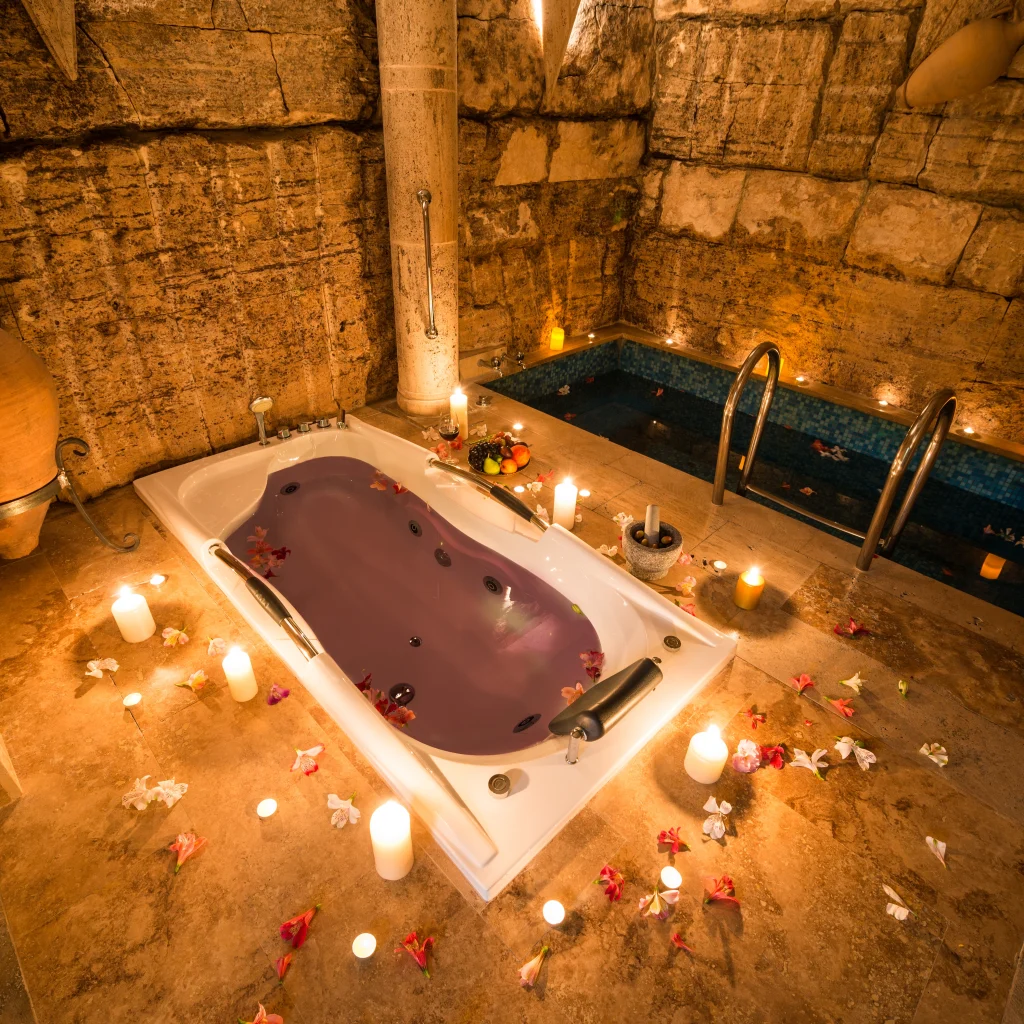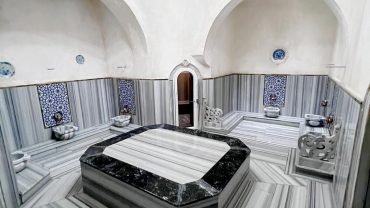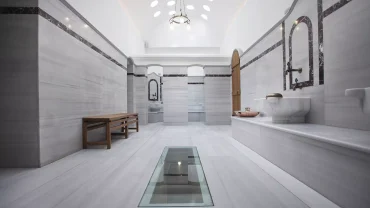Istanbul Hammams vs. World Baths: 5 Key Differences
A journey into the world of traditional bathing reveals a rich tapestry of cultural practices, each steeped in history and offering a unique path to cleanliness, relaxation, and social connection. From the steam-filled chambers of Istanbul to the serene geothermal springs of Japan, bathing is more than a mere act of hygiene; it is a ritual, a social institution, and a reflection of a region’s soul.
While the goal of rejuvenation is universal, the methods and philosophies behind these practices vary dramatically. This exploration will delve into the heart of these differences, contrasting the iconic Istanbul hammam with other prominent bathing cultures from around the globe.
The Turkish hammam, a direct descendant of the Roman thermae, has evolved over centuries to become a cornerstone of Ottoman and modern Turkish culture. Its emphasis on communal bathing, specific architectural elements, and a distinct step-by-step cleansing ritual sets it apart.
But how does this experience truly compare to the volcanic hot springs of a Japanese onsen, the intense heat of a Finnish sauna, the invigorating rituals of a Russian banya, or the grand social centers of the ancient Roman baths?
Understanding these five key differences will not only illuminate the unique character of the Istanbul hammam but also provide a deeper appreciation for the diverse ways humanity has embraced the restorative power of water and heat.
Learn more details about Hammam
1. The Ritual: A Guided Journey vs. Self-Directed Soaking
Perhaps the most significant distinction lies in the bathing process itself. An authentic Istanbul hammam experience is a structured and guided affair, a ceremonial journey from steam to scrub to soap. In contrast, many other world baths offer a more self-directed and individualistic approach to relaxation.
The Istanbul Hammam Ritual:
The hammam ritual is a meticulously choreographed sequence of events, traditionally administered by a tellak (for men) or a natir (for women). This attendant is a crucial part of the experience, guiding the bather through each stage of the process.
- The Warm Room (Sıcaklık): The journey begins in a heated room with a central, raised marble platform known as the göbek taşı (belly stone). Here, the bather relaxes, allowing the warm, humid air to open their pores and prepare their skin for the subsequent treatments.
- The Exfoliation (Kese): After a sufficient period of sweating, the attendant uses a coarse mitt, the kese, to vigorously exfoliate the bather’s entire body. This process removes dead skin cells, leaving the skin feeling remarkably smooth and revitalized.
- The Foam Massage (Köpük Masajı): Following the exfoliation, the attendant creates a mountain of fragrant, soapy bubbles using a special cloth. This luxurious foam is then massaged into the skin, cleansing and soothing the body.
- Rinsing and Relaxation: The final stage involves a thorough rinsing with warm and cool water in the cooler sections of the hammam. Bathers are then provided with fresh towels and can relax in the cool room (soğukluk), sipping on Turkish tea or sherbet.
Contrasting World Bathing Practices:
- Japanese Onsen: In a Japanese onsen, the focus is on quiet contemplation and the therapeutic properties of the mineral-rich geothermal water. Bathers are expected to wash thoroughly before entering the communal baths. Once in the onsen, the experience is one of peaceful soaking and personal reflection, with no attendants involved in the bathing process itself.
- Finnish Sauna: The Finnish sauna is centered around the concept of löyly, the steam created by throwing water on heated stones. Bathers alternate between periods of intense, dry heat in the sauna and cooling off periods, which can include a dip in a cold lake or a roll in the snow. The experience is highly personal and self-regulated.
- Russian Banya: While the banya shares the use of steam with the hammam, a key element is the venik, a bundle of leafy birch or oak branches. Bathers, or an attendant, will gently beat the skin with the venik to improve circulation. Like the sauna, it involves cycles of heating and cooling, but with a more invigorating and social element.
- Roman Thermae: The ancient Roman baths were vast complexes that included a variety of rooms with different temperatures (tepidarium, caldarium, frigidarium). While attendants were available for services like massages and oiling, the primary bathing experience was a self-directed journey through these different thermal zones.
2. Architecture and Atmosphere: Marble Domes vs. Wooden Cabins
The physical environment of a bathhouse plays a crucial role in shaping the overall experience. The architectural styles of Istanbul’s hammams are a testament to Ottoman artistry and engineering, creating a unique ambiance that is both grand and intimate.
The Architectural Splendor of the Istanbul Hammam:
- Domes and Skylights: Hammams are characterized by their impressive domes, often punctuated by small, star-shaped or circular skylights. These architectural features not only create a sense of spaciousness but also allow for a soft, ethereal light to filter into the steam-filled chambers.
- Marble and Stone: The interiors of hammams are almost exclusively clad in marble and stone. These materials are not only aesthetically pleasing but also practical, as they retain heat and are easy to clean. The sound of water echoing off the marble surfaces is an integral part of the hammam’s sensory experience.
- The Göbek Taşı: The central marble platform, the göbek taşı, is the focal point of the hot room. Its elevated position allows for an even distribution of heat and provides a communal space for bathers to relax and receive treatments.
- Fountains and Basins: Ornate fountains and individual washing basins (kurna) are strategically placed throughout the hammam, providing a constant source of flowing water for rinsing and cooling.
A Global Tour of Bathhouse Design:
- Japanese Onsen: Onsen are often situated in natural, scenic locations, with outdoor baths (rotenburo) that offer breathtaking views of mountains, forests, or the sea. The architecture is typically minimalist and harmonious with the surrounding landscape, often incorporating natural wood and stone.
- Finnish Sauna: The traditional Finnish sauna is a humble wooden cabin, often located near a lake or the sea. The interior is simple and unadorned, with wooden benches and a stove for heating the stones. The focus is on functionality and a connection to nature.
- Russian Banya: Similar to the Finnish sauna, the banya is typically a wooden structure. It consists of a steam room, a washing area, and a relaxation room. The atmosphere is often rustic and convivial, with an emphasis on communal enjoyment.
- Roman Thermae: The Roman thermae were monumental structures that showcased the power and wealth of the empire. They were vast complexes with soaring arches, intricate mosaics, and grand statues. The scale and opulence of the Roman baths were designed to impress and serve a large number of people.
3. The Source and Nature of Heat: Humid Steam vs. Dry Heat
The type of heat and its source are fundamental to the bathing experience, influencing both the physiological effects and the overall ambiance. Istanbul hammams are defined by their use of moist, radiant heat, a stark contrast to the dry heat of a Finnish sauna.
The Humid Embrace of the Hammam:
The heat in a Turkish hammam is generated by a furnace that heats both water and the air, which is then circulated through pipes under the floor and behind the walls. This creates a consistently high level of humidity, resulting in a gentle, enveloping steam that is less intense than the blasts of steam in a Russian banya.
The radiant heat from the marble surfaces further contributes to the gradual and deep warming of the body. This moist heat is believed to be beneficial for the respiratory system and is less dehydrating than dry heat.
Global Variations in Heat:
- Finnish Sauna: The Finnish sauna utilizes a dry heat, with temperatures typically ranging from 80 to 100 degrees Celsius and very low humidity. The experience is one of intense heat that induces profuse sweating. Steam (löyly) is created intermittently by throwing water on the hot stones, but the primary environment is dry.
- Russian Banya: The banya combines elements of both dry and wet heat. The room is heated to a high temperature, and then water is thrown on the stove to create powerful bursts of steam, significantly increasing the humidity and the perceived heat.
- Japanese Onsen: The heat in an onsen comes directly from the earth’s geothermal activity. The water temperature can vary from warm to very hot, and the experience is one of immersion in naturally heated, mineral-rich water.
- Roman Thermae: The Roman baths employed a sophisticated underfloor heating system called a hypocaust. A furnace would heat the air, which would then circulate under the raised floors and through hollow tiles in the walls, creating a radiant heat similar to that found in a hammam.
4. The Social Dimension: Communal Cleansing vs. Quiet Contemplation
While all bathing cultures have a social element, the nature of this interaction varies significantly. Istanbul hammams have historically been vital social hubs, particularly for women, offering a space for connection and community in a way that is distinct from the more introspective nature of some other bathing traditions.
The Hammam as a Social Institution:
In the Ottoman Empire, the hammam was one of the few public spaces where women could gather outside of their homes. It was a place for socializing, exchanging news, and celebrating important life events such as weddings and births. This tradition of communal bathing continues today, with hammams serving as places where friends and family can relax and connect. The shared experience of the ritual fosters a sense of camaraderie and intimacy.
Global Perspectives on Social Bathing:
- Japanese Onsen: While onsen are communal, the etiquette emphasizes quiet and respectful behavior. Conversations are typically kept to a minimum, and the overall atmosphere is one of serene contemplation. The social interaction is more subtle and less boisterous than in a hammam.
- Finnish Sauna: The sauna is a cherished space for Finns to gather with family and friends. It is a place for open and honest conversation, and it is not uncommon for business meetings to be conducted in a sauna. However, the focus is on relaxation and connection in a more informal and less ritualized setting than the hammam.
- Russian Banya: The banya is a highly social affair, often enjoyed with a group of friends. The experience is typically lively and convivial, with conversation, food, and drink being an integral part of the ritual.
- Roman Thermae: The Roman baths were the ultimate social centers of the ancient world. They were places for bathing, exercising, socializing, and conducting business. The sheer scale of the thermae and the variety of activities they offered made them central to Roman public life.
5. The Philosophy and Purpose: Spiritual Purity vs. Health and Wellness
Underlying the physical practices of each bathing culture is a deeper philosophy and purpose. The Istanbul hammam is rooted in Islamic traditions of ritual purification, while other bathing cultures may place a greater emphasis on the health benefits of heat and cold therapy or a connection with nature.

The Spiritual Dimension of the Hammam:
In Islam, cleanliness is an essential component of religious observance. The hammam, therefore, has traditionally been seen as a place for achieving not only physical but also spiritual purity. The ritual of washing is a symbolic act of cleansing the body and soul. This spiritual dimension infuses the hammam experience with a sense of reverence and tranquility.
Diverse Motivations for Bathing:
- Japanese Onsen: The philosophy of the onsen is deeply connected to Shinto and Buddhist beliefs about the purity of nature. Soaking in the geothermally heated, mineral-rich water is seen as a way to connect with the natural world and to heal the body and mind.
- Finnish Sauna: The sauna has long been considered a sacred place in Finnish culture. It was traditionally the site of childbirth and healing rituals. Today, the focus is more on the scientifically proven health benefits of regular sauna use, including improved cardiovascular health and stress reduction.
- Russian Banya: The banya is associated with a wide range of health benefits, from improving circulation and boosting the immune system to relieving muscle soreness. The invigorating combination of heat, steam, and the venik is seen as a way to promote overall well-being.
- Roman Thermae: For the Romans, bathing was an essential part of a healthy and civilized lifestyle. The thermae were places to maintain hygiene, exercise, and engage in social and intellectual pursuits. The philosophy was one of mens sana in corpore sano (a healthy mind in a healthy body).
Booking guide for Popular Hammams
In conclusion, while the world’s great bathing traditions share a common thread of promoting well-being, the Istanbul hammam offers a uniquely captivating experience. Its structured ritual, stunning Ottoman architecture, enveloping steam, vibrant social atmosphere, and deep-rooted spiritual significance set it apart. To step into a hammam is to step into a living history, a tradition that has been perfected over centuries to cleanse, relax, and rejuvenate both body and soul in a way that is profoundly and unforgettably Turkish.






Comment (0)